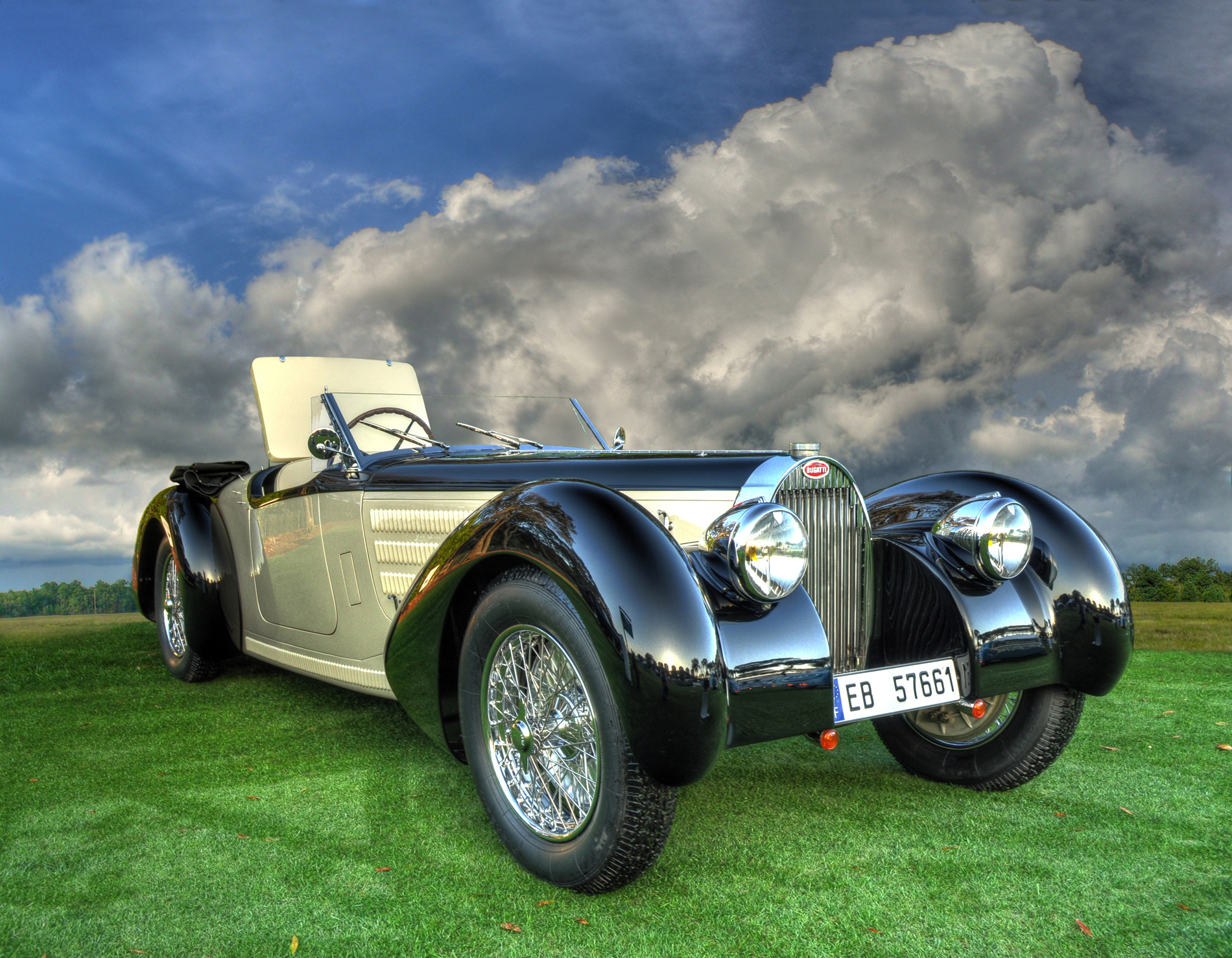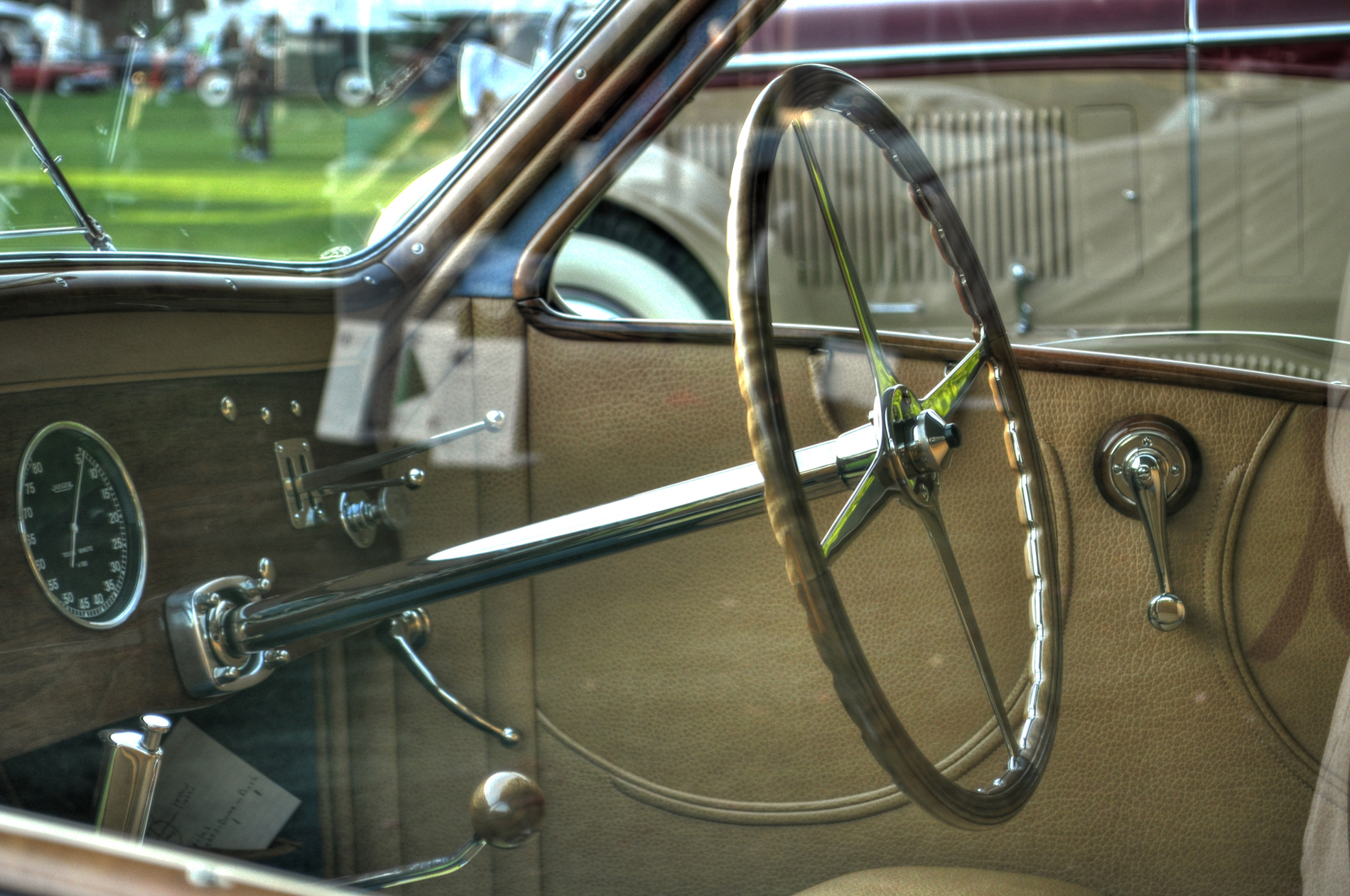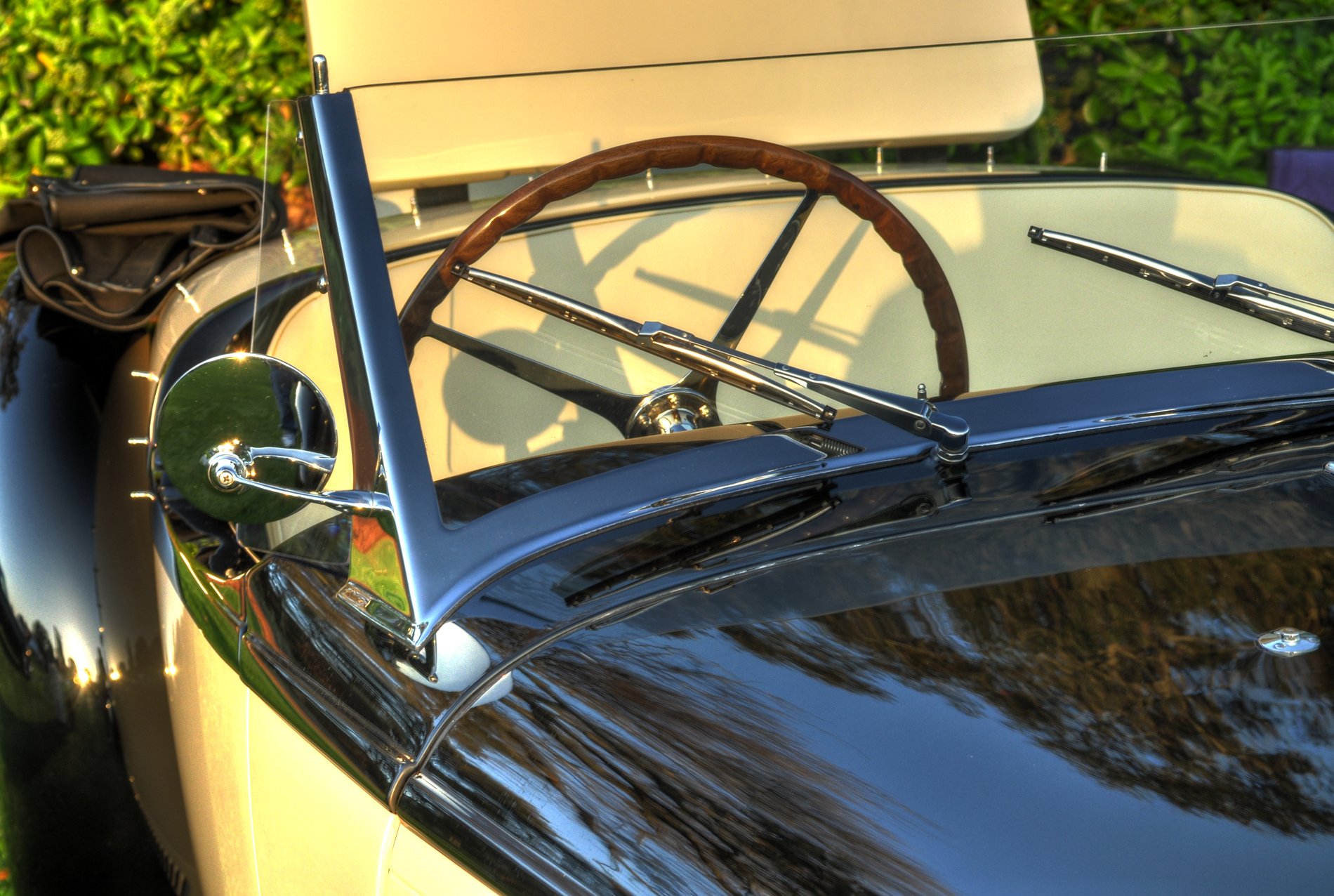
The 1938 Bugatti 57C is recognized as being the most sporting of all non-racing Bugatti’s. The T57/57C was and entirely new design heavily influenced by Jean Bugatti, son of founder Ettore. Between 1934 and the outbreak of World War II, more than 680 examples were produced in various body styles. The vehicle delivered all around refinement, while focusing on the engineering values that had made Bugatti successful.
Chassis #57661 was delivered in May 1938, with a Stelvio cabriolet body to Lacroix. The car was refitted with this unique Volla Ruhrbeck “Waterfall” body which has now been retrofitted to chassis 57819. This car was restored in 2010, with engine 25C by Highmountain Classics and fitted with a reproduction roadster body built by Autoclassic Tourane (Tours France) to the design the Jean Bugatti and Gangloff completed in December of 1935.
Overview
- Production Years: 1934-1940
- Manufacturer: Bugatti
- Class: Luxury car / Grand Tourer
- Body Styles: Various coachbuilt styles, including coupes, convertibles, and sedans
Design and Specifications
- Engine:
- The Bugatti Type 57C was powered by a 3.3-liter (3257 cc) inline-eight engine.
- It featured an advanced overhead camshaft design and was capable of producing around 160 horsepower.
- Transmission:
- Equipped with a 4-speed manual gearbox, providing smooth and precise gear changes.
- Chassis:
- The car featured a robust and lightweight chassis, designed for both performance and comfort.
- Suspension:
- Front: Independent suspension with solid axles and semi-elliptic leaf springs.
- Rear: Live axle with reversed quarter-elliptic leaf springs, providing a balance of handling and comfort.
Performance
- Top Speed: Capable of reaching speeds up to 100 mph (160 km/h), depending on the body style and configuration.
- Racing Success:
- The Type 57C was derived from the Type 57, which itself was successful in motorsport, including wins at prestigious events like the 24 Hours of Le Mans.
- The Type 57C featured a supercharged version of the engine ("C" for "Compressor"), enhancing performance and making it a favorite among racing enthusiasts.
Design Features
- Bodywork:
- The Bugatti Type 57C was often fitted with custom coachwork by renowned coachbuilders such as Gangloff, Figoni & Falaschi, and Vanvooren.
- Styling elements included elegant curves, streamlined profiles, and iconic Bugatti design cues such as the horseshoe-shaped radiator grille and distinctive fenders.
- Interior:
- The interior of the Type 57C reflected Bugatti's commitment to luxury and craftsmanship, featuring premium materials, exquisite detailing, and ergonomic design for driver and passengers.
Legacy
- Historical Significance:
- The Bugatti Type 57C represents a pinnacle of pre-war automotive engineering and luxury, embodying Ettore Bugatti's vision of combining performance with elegance.
- Its advanced technology and racing pedigree continue to influence automotive design and engineering.
- Collector's Item:
- Due to its rarity, historical significance, and exquisite design, the Bugatti Type 57C is highly prized by collectors and automotive enthusiasts.
- Well-preserved examples with original coachwork command significant value at auctions and are cherished for their beauty, craftsmanship, and engineering heritage.
You may purchase a print of the 1938 Bugatti 57C in our dElegance 2011 online gallery.



